Fat-tailed Dunnart
Fat-tailed DunnartSminthopsis crassicaudata | |
|---|---|
| Kingdom: | Animalia |
| Phylum: | Chordata |
| Class: | Mammalia |
| Sub-class: | Marsupiala |
| Order: | Dasyuromorphia |
| Family: | Dasyuridae |
| Status | |
| Australia: | Not threatened |
| Victoria: | Vulnerable (FFG Threatened List 2025) |
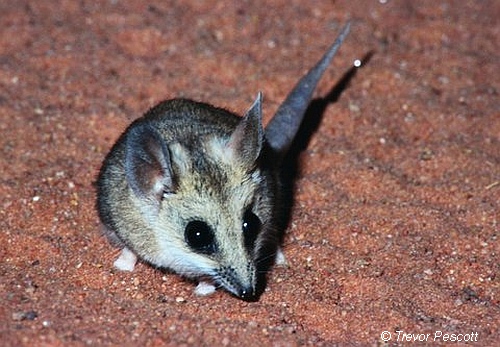
The Fat-tailed Dunnart is a native marsupial and should never be considered a pest or confused with the House Mouse.
The Fat-tailed Dunnart has a head and body length of 60-90mm, tail 45-70cm in length and weighs only 10-20 g. It has large black eyes, large ears, a pointed snout and a fat tail when in optimum condition. Most of the upper body is fawn to brownish grey in colour, with darker patches around the eyes and head. Some individuals have white crescent shaped patches around the ears. The underside and the legs are usually light grey to white in colour.
The Fat-tailed Dunnart is the most widely distributed Dunnart species, being found in New South Wales, South Australia, Queensland, Western Australia and the Northern Territory.
The Fat-tailed Dunnart comprises two sub-species;
- Sminthopsis crassicaudata centralis, found in the more northern arid areas of Australia
- Sminthopsis crassicaudata crassicaudata, which occurs in the less arid southern areas, including Victoria.
Distribution
In Victoria, the Fat-tailed Dunnart is only found in the western part of the State generally west of the Hume Highway. Concentrations occur on the Victorian Volcanic Plains.
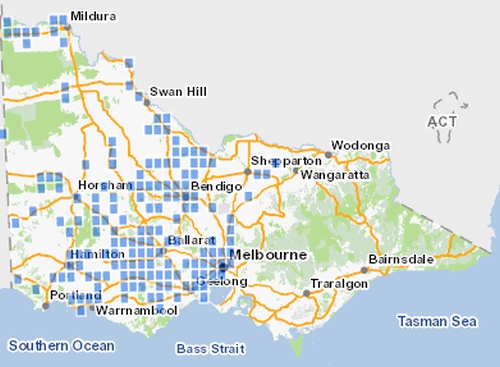
All known records of Fat-tailed Dunnart in Victoria. Source: VBA 2024.
Ecology & Habitat
Fat-tailed dunnarts occupy a variety of open habitats, including open woodland, low shrublands and arid shrublands. Populations can also be found living in areas of agricultural land such as unimproved pasture, they have been found in old hay sheds, amongst rock piles and old logs. Cracking clay soils such as those found on the Volcanic Plain in western Victoria provide suitable habitat where animals can shelter and forage for food.
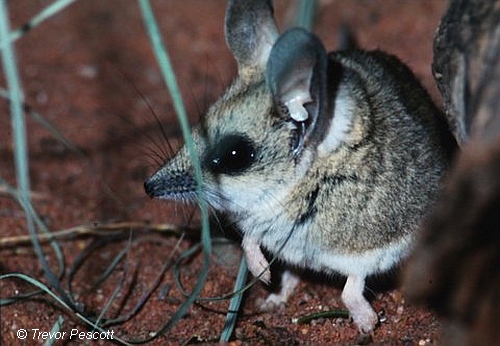
Diet
The Fat-tailed Dunnart is nocturnal and mainly feeds on small invertebrates such as beetles, spiders, slaters, worms and slugs. Body fat is stored in the tail when food is plentiful, giving the tail a swollen appearance . This helps the individual to survive when food is in short supply. The tail generally appears thinner in winter when food is scarcer. If food is very scarce, usually in the cooler months, dunnarts may enter a deep temporary sleep known as torpor.
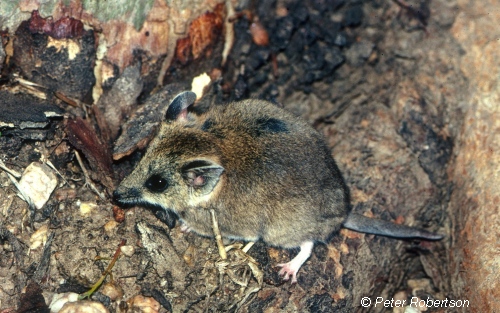
Home range
Males and females have large home ranges that change throughout the year, and overlap with ranges of other individuals. Males are not territorial; however females may defend the area around their nesting site when they have older young. Nesting and resting range can be as small as 50 metres.
Breeding
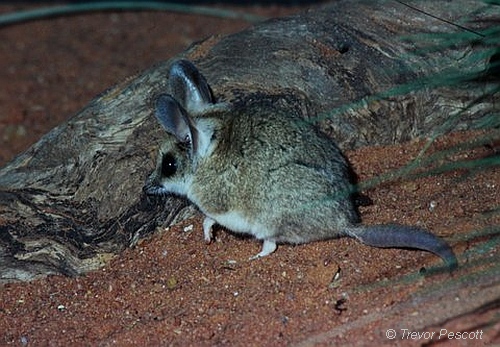
Fat-tailed Dunnarts are short lived, about 15 months for males and 18 months for females which means successful breeding is important for populations to survive.
Breeding occurs between July and February. Females construct nests under logs, rocks, or in deep cracks in the ground, made out of dried plant material.
Adult Fat-tailed Dunnarts have multiple partners but most individuals nest alone during mating season. Usually 8 to 10 young are born about 13 days after mating. The young attach firmly to the 8 to 10 teats that the female has in her well-developed pouch. They leave her pouch permanently approximately 60 days after birth, staying in the nest while the mother forages for food.
The young are weaned from their mother after approximately 70 days; however by this time on average only 5 young have survived. The young reach sexual maturity at 4-5 months of age, however females don’t breed within the first year of birth. Mothers do not provide further care to their young once they can survive on their own.
Some females can produce two litters during the breeding season.
Conservation status
The Fat-tailed Dunnart Sminthopsis crassicaudata crassicaudata was listed as Near Threatened on the Advisory List of Threatened Vertebrate fauna in Victoria 2013, (Department of Sustainability and Environment) but was reassessed in 2020 and not included on the FFG Thraetened List in June 2021. In December 2022 it was assessed as Vulnerable by the FFG Scientific Committee and was included on the FFG Threatened List in June 2023.
Part of the assessment process to change the conservation status was a requirement to collect data from two consecutive years of survey data across the entire species range. This type of survey effort is beyond the capacity of most researchers which therefore means surveys need to be supported by government funding. See: Fat-tailed Dunnart research, SWIFFT Seminar Notes.
Threats
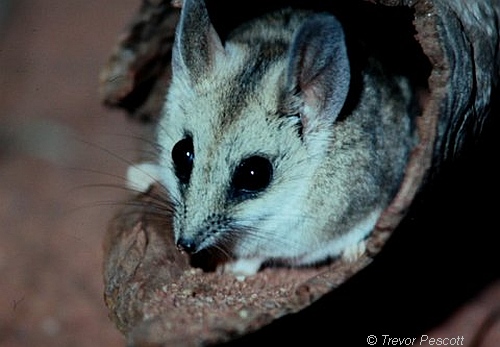
Threats facing the Fat-tailed Dunnart are common to most of Australia’s small mammals. These include:
- Loss of habitat - impacting on shelter & food provided by rocks, logs, tussocks, ground cover and crevices.
- Competition from pest animals.
- Predation by feral animals such as cats and foxes
It is possible that people are mistaking dunnarts for mice and are setting traps for them
If you live in an area that may have dunnarts, there are a few things you can do to help protect them:
- Leave habitat on your property as natural as possible; leave logs and rocks, and avoid clearing large areas of leaf litter in areas where there is limited fire danger to assets.
- If you have a pet cat, either keep it indoors at night or construct an outdoor cat run. This will prevent the cat from killing small mammals like the dunnart.
- Carry out fox, feral cat and rabbit control on your property. This will help alleviate predation pressure and competition for resources.
- If you discover small mouse-sized mammals around your property around or after dusk, try to identify the species. It might be a dunnart instead of a mouse!
References & Links
- FFG Thraetened List (2024) Flora and Fauna Guarantee Act Threatened List, March 2025, Department of Energy, Environment and Climate Action (DEECA), Victoria.
- Mammals of Victoria, Distribution, Ecology and Conservation, Edited by Peter W Menkhorst, Oxford University Press, 1995.
- The Australian Museum Complete Book of Australian Mammals, Edited by Ronal Strahan, Angus and Robertson Publishers 1983.
- Victorian Biodiversity Atlas, Department of Environment, Land, Water & Planning, Accessed September 2015.
- Australian Mammalogy 2011, 34(1) 49-54 Short-term movement patterns and diet of small dasyurid marsupials in semiarid Australia. Lisa Warnecke Gerhard Körtner, Chris J. Burwell, James M. Turner and Fritz Geiser. http://dx.doi.org/10.1071/AM10052
- VBA (2019) Victorian Biodiversity Atlas, Department of Environment, Land, Water and Planning, Victoria.

